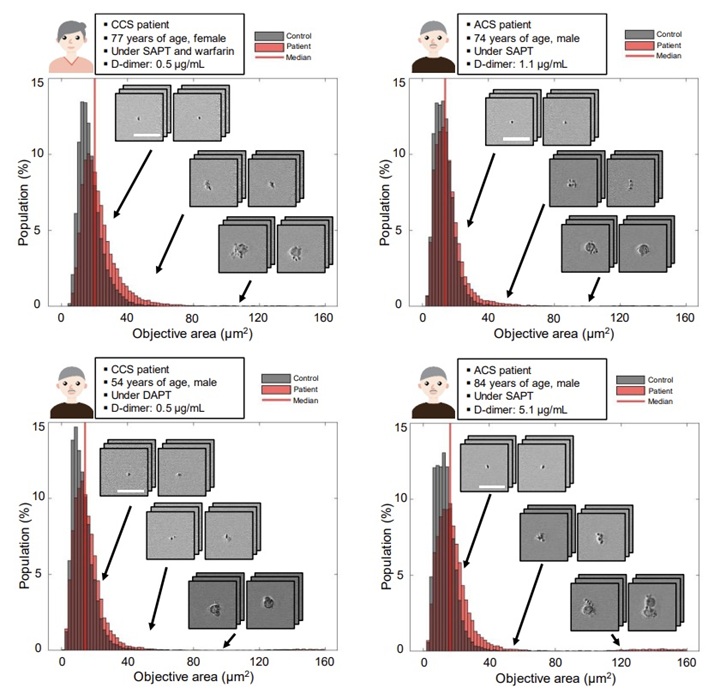AI Microscope Spots Deadly Blood Clots Before They Strike
Posted on 16 May 2025
Platelets are small blood cells that act as emergency responders in the body, rushing to areas of injury to help stop bleeding by forming clots. However, sometimes platelets can overreact, leading to complications. In heart disease, particularly coronary artery disease (CAD), platelets play a critical role by contributing to the formation of blood clots within arteries, which can cause heart attacks or strokes. To reduce the risk of dangerous clots, patients with CAD often receive antiplatelet drugs. Despite this, it remains challenging to accurately assess how well these drugs are working for each patient, making the ability to monitor platelet activity a vital objective for healthcare professionals and researchers. Now, a research breakthrough allows for the observation of clotting activity in blood as it happens, without the need for invasive procedures.
In a new study, researchers from the University of Tokyo (Tokyo, Japan) utilized a novel microscope and artificial intelligence (AI) to monitor platelet aggregation in patients with CAD, paving the way for safer, more tailored treatments. The study published in Nature Communications highlights the system designed to track platelets in motion using a high-speed optical device combined with AI analysis. The team employed a frequency-division multiplexed (FDM) microscope, a sophisticated device that operates like a super-fast camera capturing detailed images of blood cells in flow. Similar to traffic cameras that record every vehicle, this microscope takes thousands of snapshots of moving blood cells per second. By analyzing these images with AI, the system can distinguish between individual platelets (akin to a single car), platelet clumps (like a traffic jam), and even white blood cells (comparable to a police car in the jam).

The researchers tested this technique on blood samples from over 200 patients. The results revealed that patients with acute coronary syndrome exhibited a higher number of platelet aggregates compared to those with chronic symptoms, indicating that the technology could effectively monitor clotting risk in real time. One of the most significant findings was that a simple blood draw from the arm—rather than from the coronary arteries—could provide almost identical information. Typically, to understand what’s happening in the arteries, doctors must perform invasive procedures, such as inserting a catheter into the wrist or groin to collect blood. However, this study demonstrated that a regular blood sample taken from the arm can yield valuable insights into platelet activity in the arteries, making the process safer, more convenient, and less invasive. The ultimate goal of this research is to enable doctors to offer more personalized treatments for heart disease.
“Just like some people need more or less of a painkiller depending on their body, we found that people respond differently to antiplatelet drugs. In fact, some patients are affected by recurrent thrombosis and others are suffering from recurrences of bleeding events even on the same antiplatelet medications,” said Dr. Kazutoshi Hirose, an assistant professor at the University of Tokyo Hospital and lead author of the study. “Our technology can help doctors see how each individual’s platelets are behaving in real time. That means treatments could be adjusted to better match each person’s needs.”














